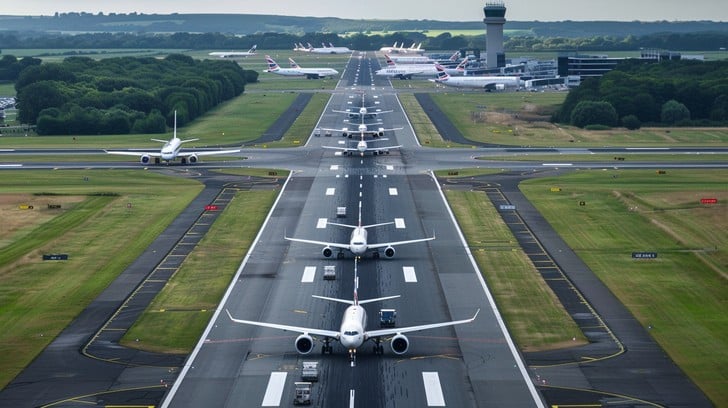There’s no doubt that during the pandemic, airlines around the world faced enormous financial losses. Some stopped operations entirely, some flew only domestic routes, and others laid off staff. Companies reduced operational costs to the minimum, even converting passenger aircraft into cargo planes. But that chaos, those dark days, are now behind us. Especially since the second quarter of 2023, the aviation industry’s recovery has gained remarkable momentum.
The International Air Transport Association (IATA) released its global passenger demand data for August 2025 earlier this week. According to the report, total demand measured in revenue passenger kilometers (RPK) increased by 4.6% compared to August 2024. Total capacity, measured in available seat kilometers (ASK), rose by 4.5% year over year. The load factor reached 86%, up by 0.1 percentage points from the same month last year, a record high for August.
In every crisis, we often hear: “Aviation is a highly dynamic industry; no matter what happens, it recovers faster than any other.” Once again, this has proven true. Today, airlines around the world are reporting record-breaking figures, and by the end of the year, we are likely to see the highest numbers ever, both for airports and airlines.
Here are five key reasons behind this success, the forces driving aviation’s record-breaking rise in 2025:
1. The Short Duration of the U.S.–Israel–Iran War
Until now, the most significant crisis that impacted aviation was undoubtedly COVID-19. Later came global economic challenges, wars, and terrorist attacks. After the pandemic ended, aviation statistics began rising again, and although the U.S.–Israel–Iran war earlier this year caused concern, its short duration meant the aviation industry was barely affected.
2. Reduction of Strikes
Strikes, especially in Germany, Ireland, and several other European countries, have been significantly reduced. Airlines and airports managed to reach a middle ground with labor unions, ensuring smoother operations. In major hubs like Munich and Frankfurt, where strikes used to occur almost every two weeks, operations continued without disruption during this busy period. The few strikes that did occur were short-lived and resolved quickly, allowing passenger traffic to continue rising steadily.
3. Experienced Workforce and Improved Training
Some airlines and airports struggled to recover even after COVID-19 ended, mainly because they had laid off their experienced staff and replaced them with new, inexperienced hires. This led to chaos in several airports throughout 2022–2023. However, those new employees have now gained the necessary experience and play a key role in ensuring smooth operations. It’s worth remembering that right after the pandemic, passengers preferred airports that retained their seasoned staff, and that difference is now closing fast.
4. Support from Aircraft Manufacturers and Leasing Companies
During the pandemic, airlines grounded their fleets. Some stored their aircraft, while others parked them in desert hangars. Aircraft manufacturers couldn’t deliver new planes, forcing airlines to bring retired aircraft back into service. Now, those long-awaited aircraft orders are being delivered and integrated into fleets. Airlines have returned to 2019 levels, the previous “record year”, and have started retiring older aircraft again. In aviation, fleet renewal, retiring one aircraft type for a more efficient model, is a clear indicator of operational improvement and financial health.
5. Dynamic New Leadership
In August last year, Boeing appointed Kelly Ortberg as its new CEO. Around the same time, U.S. carrier JetBlue Airways named Joanna Geraghty, the first female CEO in the airline’s history. Spirit Airlines appointed Dave Davis as its new President and CEO, while Air New Zealand brought in Nikhil Ravishankar just two months ago. In 2023, Qantas CEO Alan Joyce retired early to accelerate the airline’s renewal strategy, passing the role to Vanessa Hudson. Longtime airBaltic CEO Martin Gauss also stepped down, replaced by Erno Hildén. These transitions brought fresh energy and new ideas to the industry, both in airlines and at airports.
Thanks to these positive developments, the aviation sector continues to soar.
My prediction: by the end of this year, we will witness record-breaking figures across every segment, from airports to airlines, marking 2025 as a milestone year for aviation.
Safe travels. ✈️



